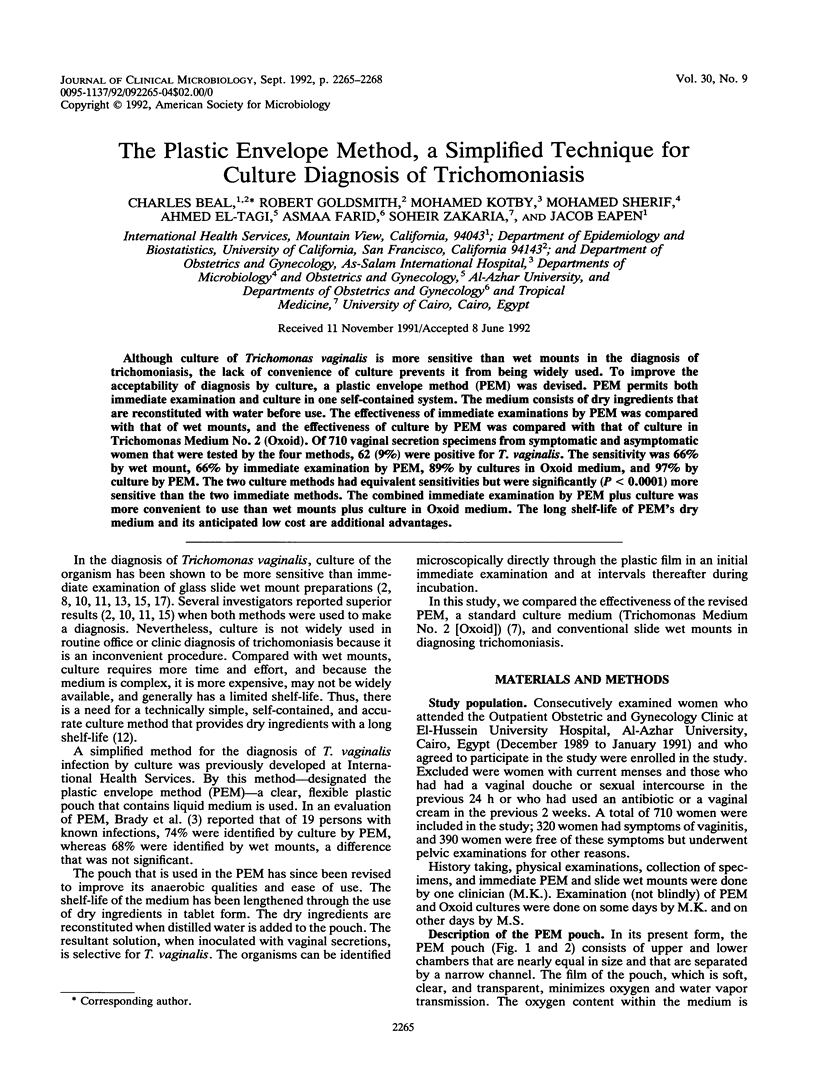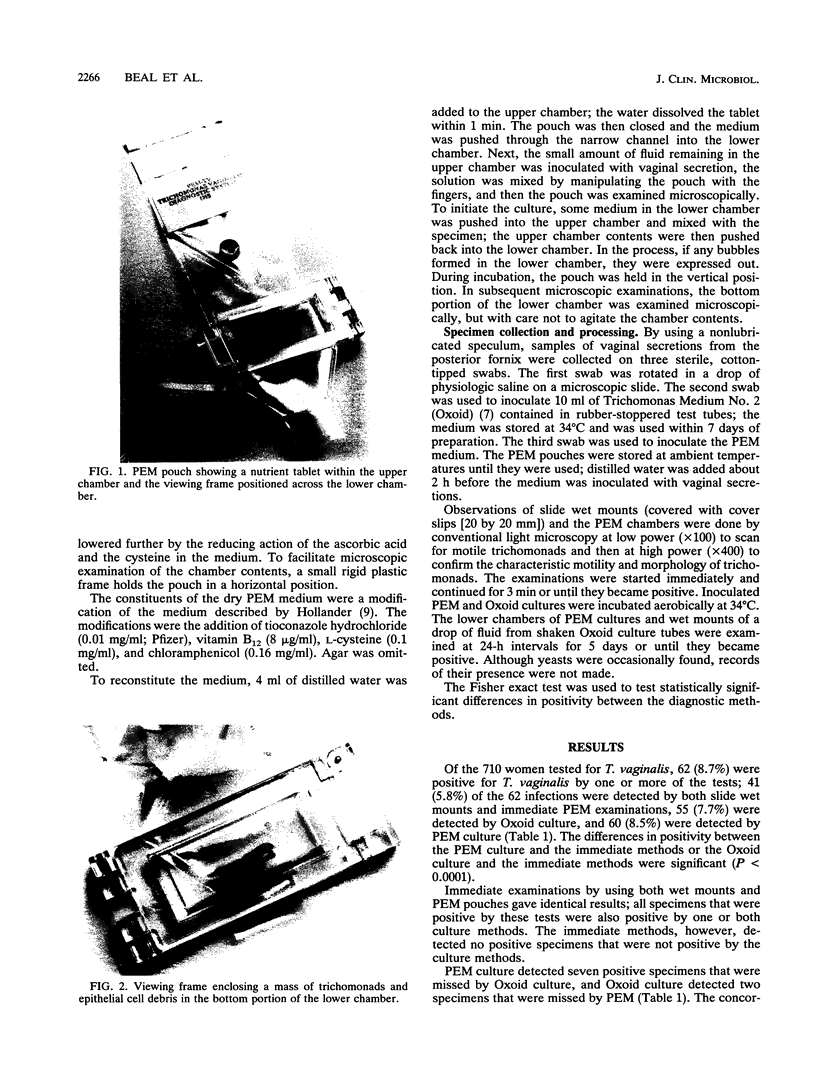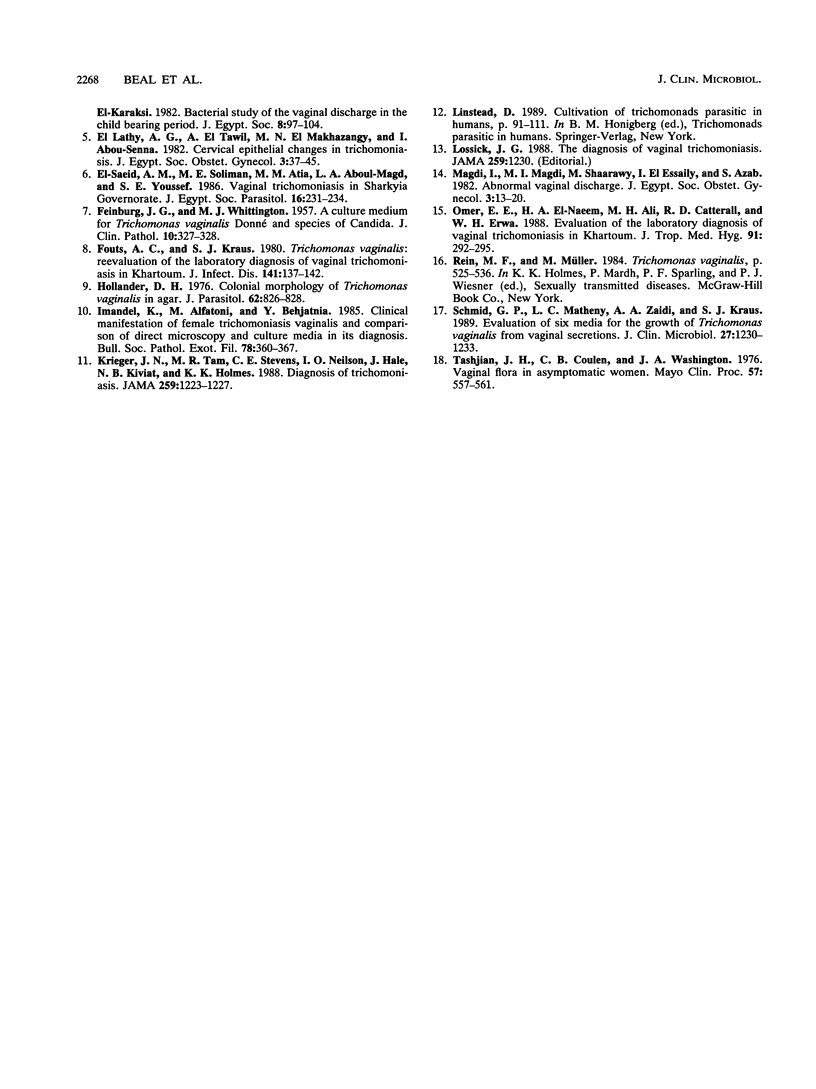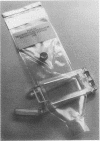Abstract
Although culture of Trichomonas vaginalis is more sensitive than wet mounts in the diagnosis of trichomoniasis, the lack of convenience of culture prevents it from being widely used. To improve the acceptability of diagnosis by culture, a plastic envelope method (PEM) was devised. PEM permits both immediate examination and culture in one self-contained system. The medium consists of dry ingredients that are reconstituted with water before use. The effectiveness of immediate examinations by PEM was compared with that of wet mounts, and the effectiveness of culture by PEM was compared with that of culture in Trichomonas Medium No. 2 (Oxoid). Of 710 vaginal secretion specimens from symptomatic and asymptomatic women that were tested by the four methods, 62 (9%) were positive for T. vaginalis. The sensitivity was 66% by wet mount, 66% by immediate examination by PEM, 89% by cultures in Oxoid medium, and 97% by culture by PEM. The two culture methods had equivalent sensitivities but were significantly (P less than 0.0001) more sensitive than the two immediate methods. The combined immediate examination by PEM plus culture was more convenient to use than wet mounts plus culture in Oxoid medium. The long shelf-life of PEM's dry medium and its anticipated low cost are additional advantages.
Full text
PDF



Images in this article
Selected References
These references are in PubMed. This may not be the complete list of references from this article.
- Bickley L. S., Krisher K. K., Punsalang A., Jr, Trupei M. A., Reichman R. C., Menegus M. A. Comparison of direct fluorescent antibody, acridine orange, wet mount, and culture for detection of Trichomonas vaginalis in women attending a public sexually transmitted diseases clinic. Sex Transm Dis. 1989 Jul-Sep;16(3):127–131. doi: 10.1097/00007435-198907000-00002. [DOI] [PubMed] [Google Scholar]
- Brady W. K., Paine D. D., Frye L. P., Sarno A. P., Purdon A., Jr, Borchardt K. A., Engelkirk P. G. Evaluation of new plastic envelope microbiology (PEM) methods as adjuncts in the diagnosis of Candida albicans and Trichomonas vaginalis vaginitis. Mil Med. 1986 Sep;151(9):478–480. [PubMed] [Google Scholar]
- FEINBERG J. G., WHITTINGTON M. J. A culture medium for Trichomonas vaginalis donné and species of Candida. J Clin Pathol. 1957 Nov;10(4):327–329. doi: 10.1136/jcp.10.4.327. [DOI] [PMC free article] [PubMed] [Google Scholar]
- Fouts A. C., Kraus S. J. Trichomonas vaginalis: reevaluation of its clinical presentation and laboratory diagnosis. J Infect Dis. 1980 Feb;141(2):137–143. doi: 10.1093/infdis/141.2.137. [DOI] [PubMed] [Google Scholar]
- Hollander D. H. Colonial morphology of Trichomonas vaginalis in Agar. J Parasitol. 1976 Oct;62(5):826–828. [PubMed] [Google Scholar]
- Imandel K., Aflatoni M., Behjatnia Y. Clinical manifestations of female trichomoniasis and comparison of direct microscopy and culture media in its diagnosis. Bull Soc Pathol Exot Filiales. 1985;78(3):360–367. [PubMed] [Google Scholar]
- Krieger J. N., Tam M. R., Stevens C. E., Nielsen I. O., Hale J., Kiviat N. B., Holmes K. K. Diagnosis of trichomoniasis. Comparison of conventional wet-mount examination with cytologic studies, cultures, and monoclonal antibody staining of direct specimens. JAMA. 1988 Feb 26;259(8):1223–1227. doi: 10.1001/jama.259.8.1223. [DOI] [PubMed] [Google Scholar]
- Lossick J. G. The diagnosis of vaginal trichomoniasis. JAMA. 1988 Feb 26;259(8):1230–1230. [PubMed] [Google Scholar]
- Omer E. F., el-Naeem H. A., Ali M. H., Catterall R. D., Erwa H. H. Evaluation of the laboratory diagnosis of vaginal trichomoniasis in Khartoum. J Trop Med Hyg. 1988 Dec;91(6):292–295. [PubMed] [Google Scholar]
- Schmid G. P., Matheny L. C., Zaidi A. A., Kraus S. J. Evaluation of six media for the growth of Trichomonas vaginalis from vaginal secretions. J Clin Microbiol. 1989 Jun;27(6):1230–1233. doi: 10.1128/jcm.27.6.1230-1233.1989. [DOI] [PMC free article] [PubMed] [Google Scholar]
- Tashjian J. H., Coulam C. B., Washington J. A., 2nd Vaginal flora in asymptomatic women. Mayo Clin Proc. 1976 Sep;51(9):557–561. [PubMed] [Google Scholar]
- el-Saeid A. M., Soliman M. E., Atia M. M., Aboul-Magd L. A., Youssef S. E. Vaginal trichomoniasis in Sharkyia Governorate. J Egypt Soc Parasitol. 1986 Jun;16(1):231–234. [PubMed] [Google Scholar]




